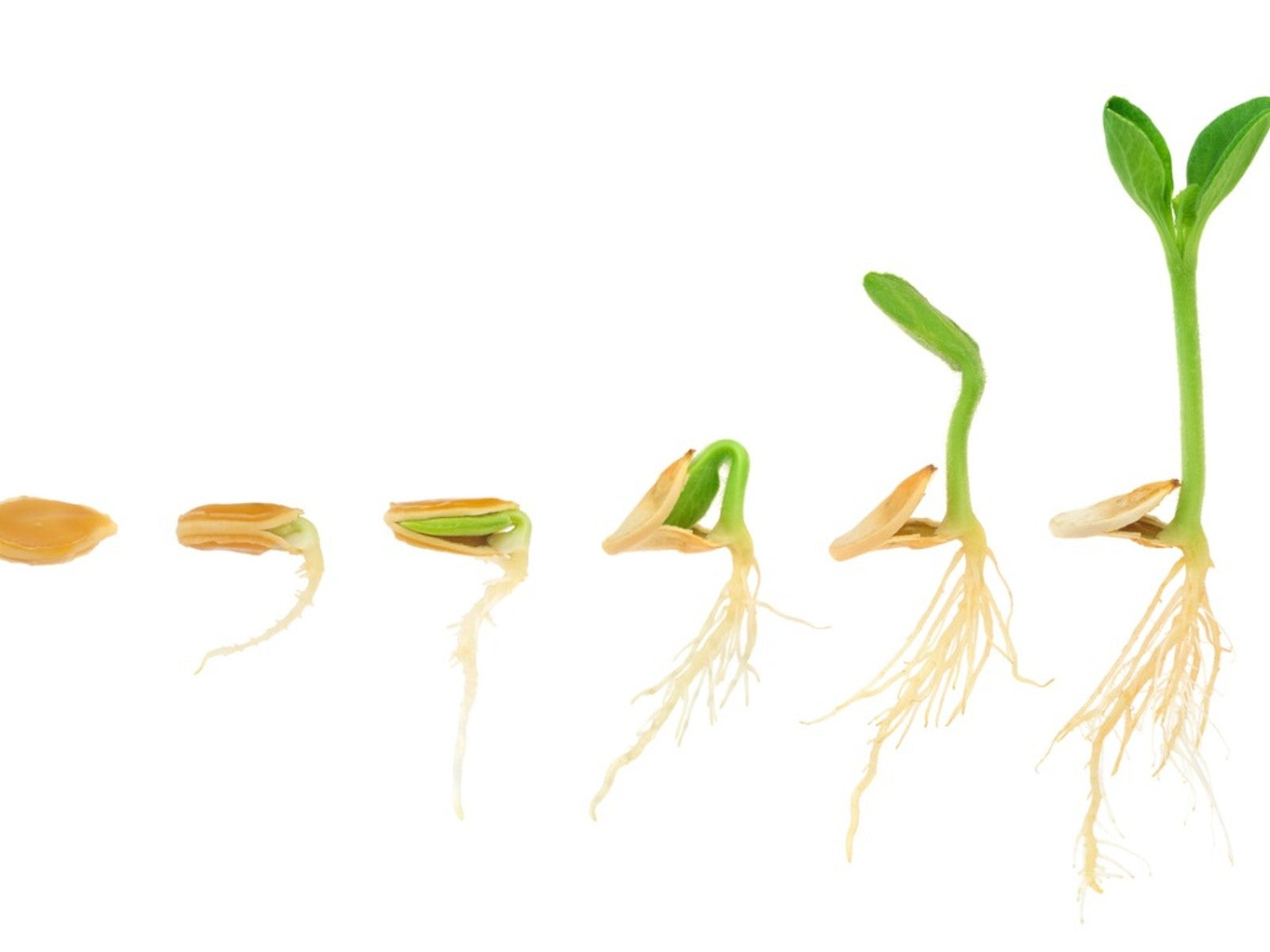What's Inside A Seed?


Sometimes in life, we take things for granted. For most gardeners, what's inside of a seed is one of those things. We poke them into the ground or seed-starting medium and wait (sometimes impatiently) for the seeds to sprout. Yet, fully understanding the process of germination begins with the anatomy of the seed.
Anatomy of a Seed
When we think about it, seeds are pretty nifty devices, in that they can control when they come to life. For most species of plants, this transformation from seed to seedling occurs when certain conditions of temperature, moisture, oxygen and light are met. To understand the process of germination, let's first look at the parts which make up a seed:
- Seed coat – Seed anatomy begins with the seed coat. Whether thin and soft or thick and hard, this seed covering protects the embryo from physical injury and dehydration.
- Embryo – Tucked away inside the seed coat is the embryo. In essence, the embryo is a tiny plant with a root, stem and leaves.
- Endosperm – The third part of the seed is the endosperm. This tissue contains a food source for the seedling. This provides the emerging seedling with energy for growth until it's able to produce its own food through photosynthesis.
What Else is Inside Seeds?
While the seed coat, embryo and endosperm make up the anatomy of the seed, it doesn't tell the whole story. The seed itself is the product of sexual reproduction. Therefore, it contains the DNA from both its mother and father. For self-fertile species, the copies of DNA are nearly identical because the pollen and the ovule belong to the same plant.
In the case of cross pollination, the maternal and paternal DNA came from different plants. Cross pollination allows plant breeders to develop hybrid varieties from two or more different, but related plants. Many plant species are polyploidy, meaning they have more than one pair of homologous chromosomes.
The chromosomes are contained within the cells of the embryo. Also contained in the embryo are the following parts of seed structure:
- Cotyledons -- These embryotic leaves are the first to appear during germination. Plant species, like grass, have one cotyledon and are labeled monocots. Those with two cotyledons are dicots.
- Hypocotyl -- The meeting point between the cotyledons and the radicle or root of the embryo is the hypocotyl. After the root emerges from the seed, the hypocotyl is responsible for lifting the growing tip and in many plant species, the seed coat containing the cotyledons, above ground.
- Plumule -- This essential part of the seed embryo will develop into the shoots of the plant. The first true leaves will grow from the plumule.
- Mycropyle -- A small opening in the seed coat, the mycropyle allows for the exchange of gas and water. For many plant species, water and oxygen must be present to trigger germination.
- Radicle -- Looking like a tiny tail on species such as peas, the radicle or root is the first part of the embryo to emerge from the seed coat during the germination process.
How Do Seeds Germinate?
As you can see, the structure of a seed plays a role in the germination process. When we poke that seed into the ground, we hope the following will happen:
- Imbibition -- If favorable germination conditions are met, water is absorbed through the mycropyle.
- Digestion and translocation -- Water activates enzymes inside the seed. These enzymes are responsible for breaking down stored food and making it available to the embryo.
- Germination -- The embryo begins to grow and the radicle emerges from the seed coat. The hypocotyl pushed the seed coat containing the cotelydons up through the soil line where the cotyledons will break free of the seed coat.
From here, growth of the seedling continues. The plumule will produce the first true leaves and soon we will have a plant worthy of creating food, adorning our homes or decorating our landscape.
Gardening tips, videos, info and more delivered right to your inbox!
Sign up for the Gardening Know How newsletter today and receive a free copy of our e-book "How to Grow Delicious Tomatoes".

Laura Miller has been gardening all her life. Holding a degree in Biology, Nutrition, and Agriculture, Laura's area of expertise is vegetables, herbs, and all things edible. She lives in Ohio.